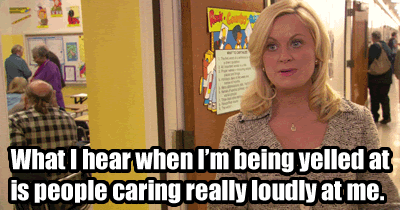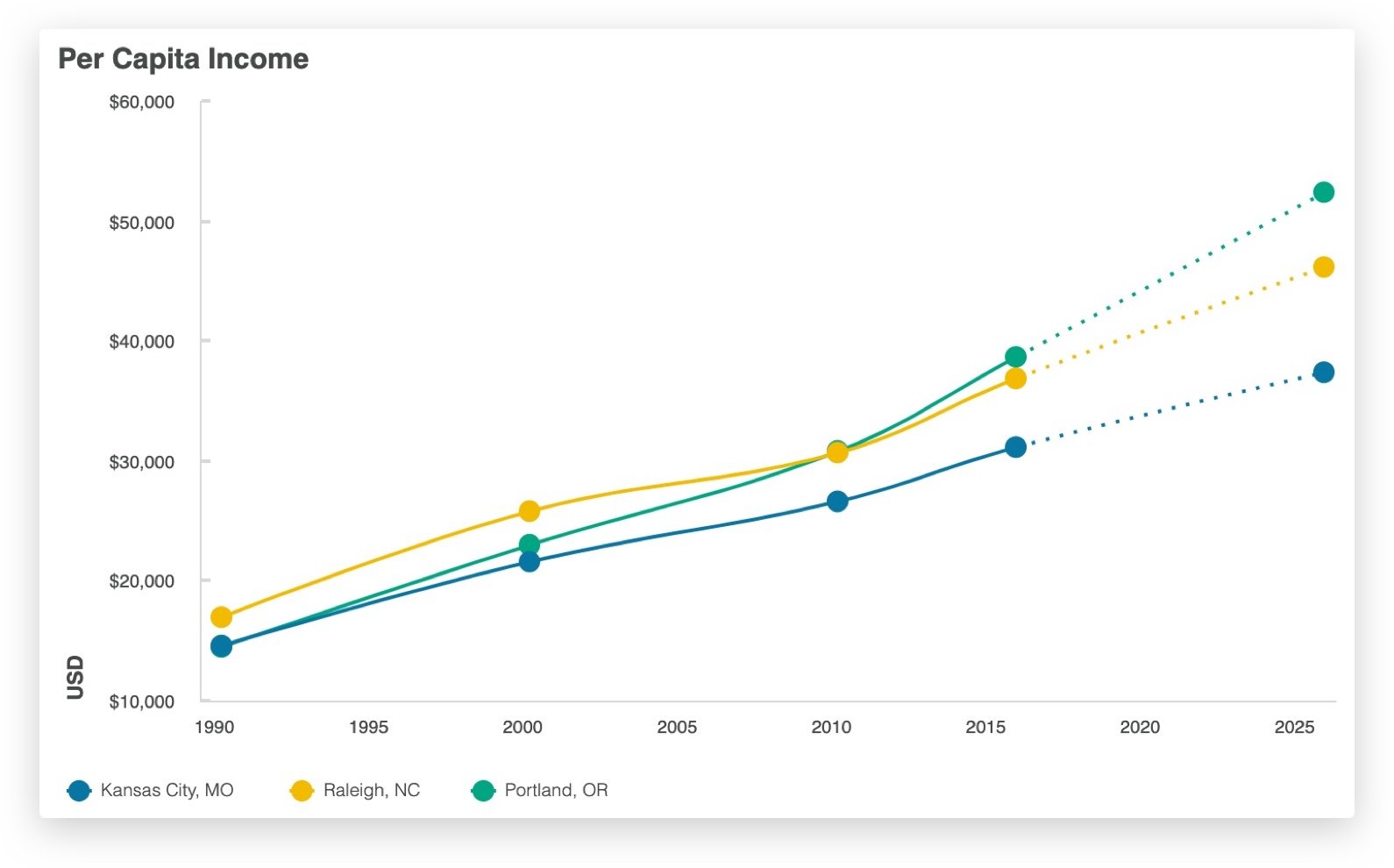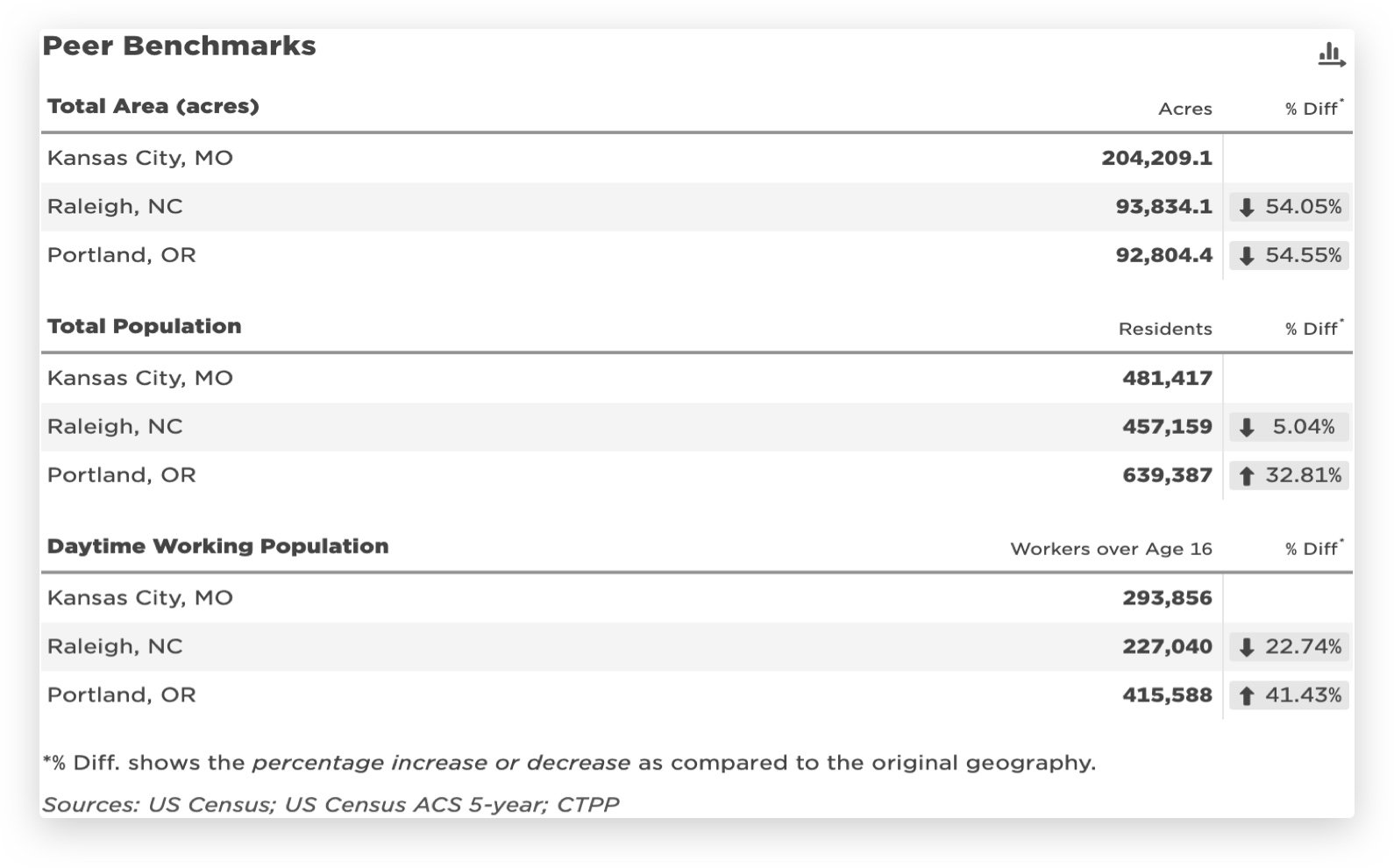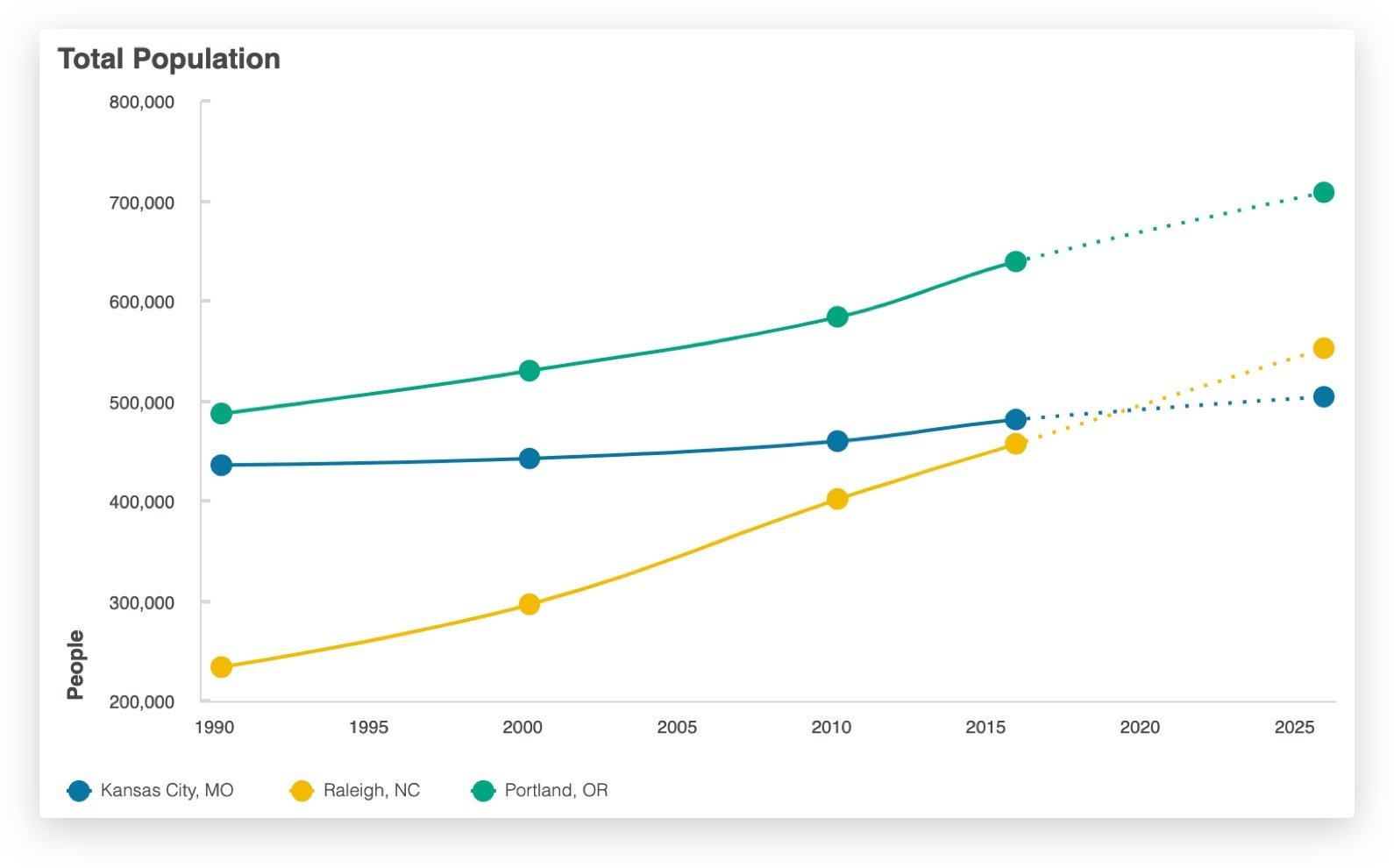5 Reasons Your City Needs Realistic Peers
If this sounds familiar, keep reading for a quick overview of five reasons why identifying peers is an essential part of moving your community forward.
1. Provide Context for Your Data
In Douglas Adams’ Hitchhiker's Guide to the Galaxy trilogy, an intelligent alien race develops a supercomputer. Its purpose is to determine the Answer to Life, the Universe, and Everything.
<Insert bated breath as the world awaits the profound epiphany>
The genius Supercomputer’s anticlimactic answer to the meaning of everything is, “42.”
Not exactly the deep and meaningful insight we were all hoping for. Yet, it’s a scenario that is all too familiar to those of us working with data in local government.
At mySidewalk, we often say that data is not intelligence, meaning that data without context isn’t particularly helpful to decision-makers. Stand-alone data sounds like this:
“Our transit system provides 14 million trips per year.”
“Our GDP grew by an annualized 3% in the previous quarter.”
“The property crime rate in our community is 24.8 per 1,000 residents.”
“Manufacturing jobs represent 6% of the jobs in our city.”
Without context, these numbers have little meaning to someone who isn’t already an expert in that field or involved in the conversation.
That’s why the first benefit of identifying your peer cities is that they allow you to put your measurements and trends in context. When you’re setting goals or building a plan, you can compare against someone like you. Allowing you to answer questions like, “is it normal for a midwestern town to be experiencing negative net migration?” And even more importantly, “What are other communities doing to address this trend?”
Looking to a peer can also inspire new solutions because you can see how similar communities address the same challenges. It also allows you to set useful benchmarks and realistic stretch goals.
Key takeaway: raw data doesn't drive insights, but benchmarking with comparable communities does. Seeing how peers handle the same struggles will help you address your toughest challenges.
2. Prove That Progress Is Possible (and It Doesn’t Have to Be Scary)
If you’re that person in local government that’s pushing your city to try something new, you can often run into resistance and skepticism.
The fear of the unknown is real. And it’s not just from residents or stakeholders, but also colleagues in the local government whose reputation might be at stake. They don’t want to be the guinea pigs for something new and untested and have it go poorly.
The sentiment is hilariously summed up in the satirical Every NIMBY's Speech at a Public Hearing. “We’re not _____” is an all-too-common objection from skeptics. Sure, it’s easy for us to mock NIMBYs on the internet, but if we’re interested in moving an idea forward, we have to understand how to address some core fears.

We can change the conversation if we identify the right peers and precedents from those communities. Just because your community has “never done something like this before,” doesn’t mean similar cities haven’t. Pointing to their success is a powerful way to allay fears about your new plan.
Key takeaway: identifying precedents and solutions from appropriate peers is an effective way to get buy-in. Especially from management and skeptics for new initiatives.
3. Respond to Disruptions Better
Working in local government means that disruptions are inevitable.
Whether it’s a novel coronavirus or a global tech company that lands in your community, how do you respond? Within the current year, cities have not only seen a pandemic and recession hit their communities. But let’s not forget the ride-hailing companies, short-term home rentals, dockless bikes, and scooter companies that all also blindsided local governments. Venture capital-funded companies can bowl over local governments with small armies of lobbyists sent to statehouses to secure their interests.
But cities can become more powerful by working together. By finding the right peers, you can develop more quickly and develop a credible and appropriate policy response.
Restrictions on short-term home rentals might be appropriate for a city already faced with affordable housing issues. Yet in a city seeking to promote tourism or rehab vacant properties, short-term rentals might be just the catalyst the community needs. Similarly, a dockless bike-share might be a nuisance for some communities, but for a city working to reduce vehicle trips and emissions, they might be an asset.
Furthermore, as communities learn about the results of their policy response, other policymakers can benefit from that knowledge.
Key takeaway: city leaders can leverage the experience of peer cities to address new or unexpected challenges.
4. Test New Ideas Faster
Sometimes cities get the rare chance to enact significant policy changes.
Minneapolis recently made headlines with its proposal to eliminate exclusionary single-family zoning districts. Meanwhile, Kansas City will likely become the largest US city to eliminate transit fares.
Experiments and policy innovation like these are what make working in local government so exciting. The good news is, if you want to know if something new will work for your town, you don’t necessarily have to execute it to find out.
If you see similar cities using that initiative, and you have enough key indicators in common, chances are it will work for you as well. The more you have in common, the more likely the initiative will succeed.
Key takeaway: learning from similar peer cities enables you to test out new policies and programs without having to implement them yourself.
5. Develop Community and Solidarity
Anyone who’s worked in local government knows that it’s not easy, especially if you’re someone who wants to instigate change. The road ahead is worthy but challenging.
That’s why it’s crucial to remember you’re not alone. This knowledge is your most important survival strategy. Developing peer cohorts to exchange ideas and experiment with innovative policies should be a priority.
But more than anything, we need them to develop a network of mutual support. It’s especially crucial to collaborate with communities that are like yours across key indicators, like population, growth, opportunity, diversity, and affordability.
Those folks are your realistic peers. They should be comparable, because peers function as a mirror, highlighting your city's identity and progress.
 Image credit: mySidewalk Outcomes & Peer Benchmarking report
Image credit: mySidewalk Outcomes & Peer Benchmarking report
So, while it may be tempting to identify Austin or Nashville as peers, they might fall more into the aspirational cities category.
Understanding the difference between your aspirations and metrically similar peers is vital. Because nine times out of ten comparing to peers will be more helpful. Stacking up against peers reveals the things your city could work on, and it highlights the things that make your city unique and special.
Key takeaway: connecting with realistic peer cities is a great way to establish a supportive community of city leaders that are going through similar challenges. It’s also a great way to find low hanging fruit.
So, How Do You Find Your Realistic Peer Cities?
mySidewalk uses five dimensions for measuring similarities and differences between groups, including 12 outcome indicators across five priority areas. Here’s an example of a mySidewalk Peer Cities report that you can use to judge whether or not you’ve found an appropriate peer.


Image credits: mySidewalk Outcomes & Benchmarking report
The report template helps you: 1) Identify community outcome indicators that match your priorities. 2) Establish local benchmarks. 3) Discover peer areas for comparison.
If you’re intrigued, request a free Peer Cities report. Once you submit your request, we'll schedule a quick consult, and then walk you through your customized peer cities analysis.
If you like what you read, stay tuned. This blog is the first in a Peer Cities series. Next time we’ll talk about some of the quantitative factors that help organize communities into peer groups.
Share this
You May Also Like
These Related Stories

City Performance: How to Get Your City Ready for Data Transformation

Disaster Recovery Means You Never Go Back to Normal



No Comments Yet
Let us know what you think